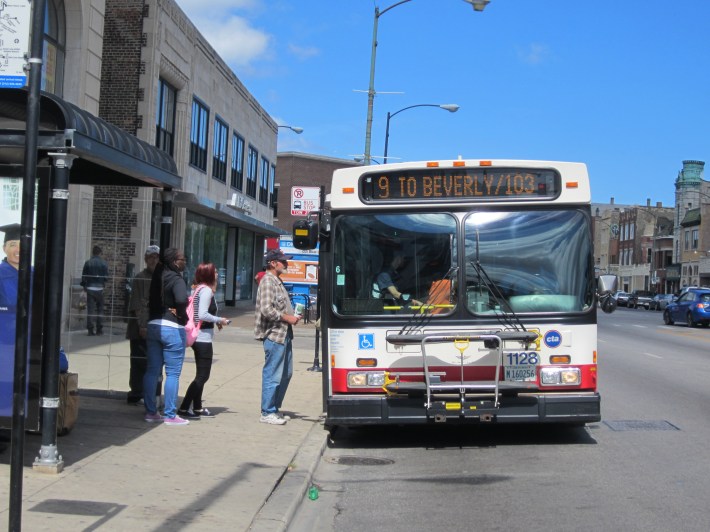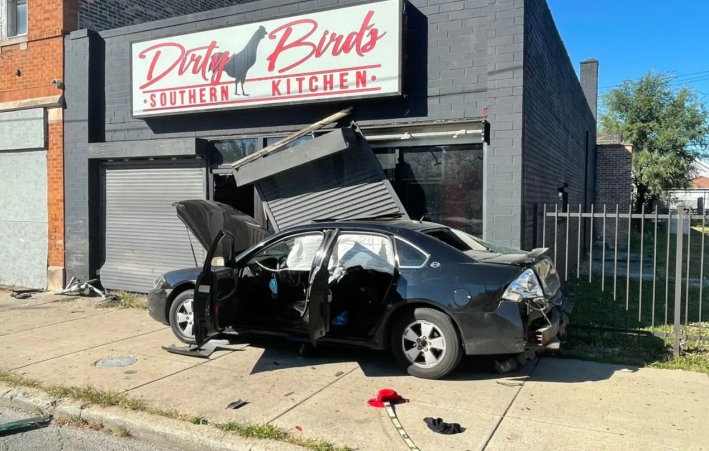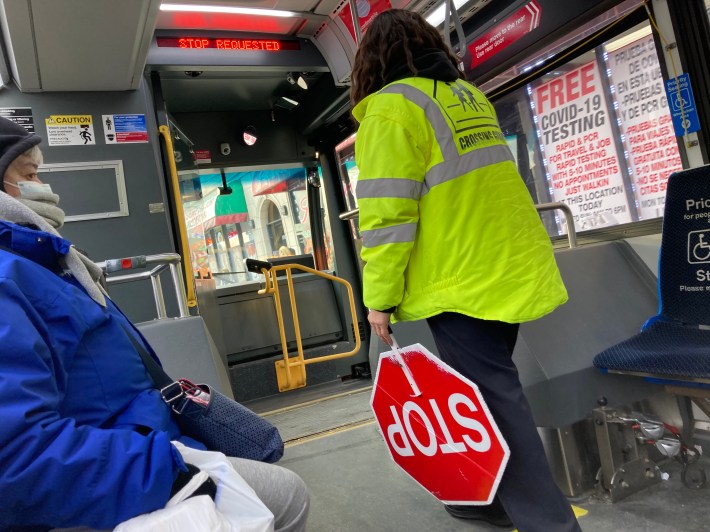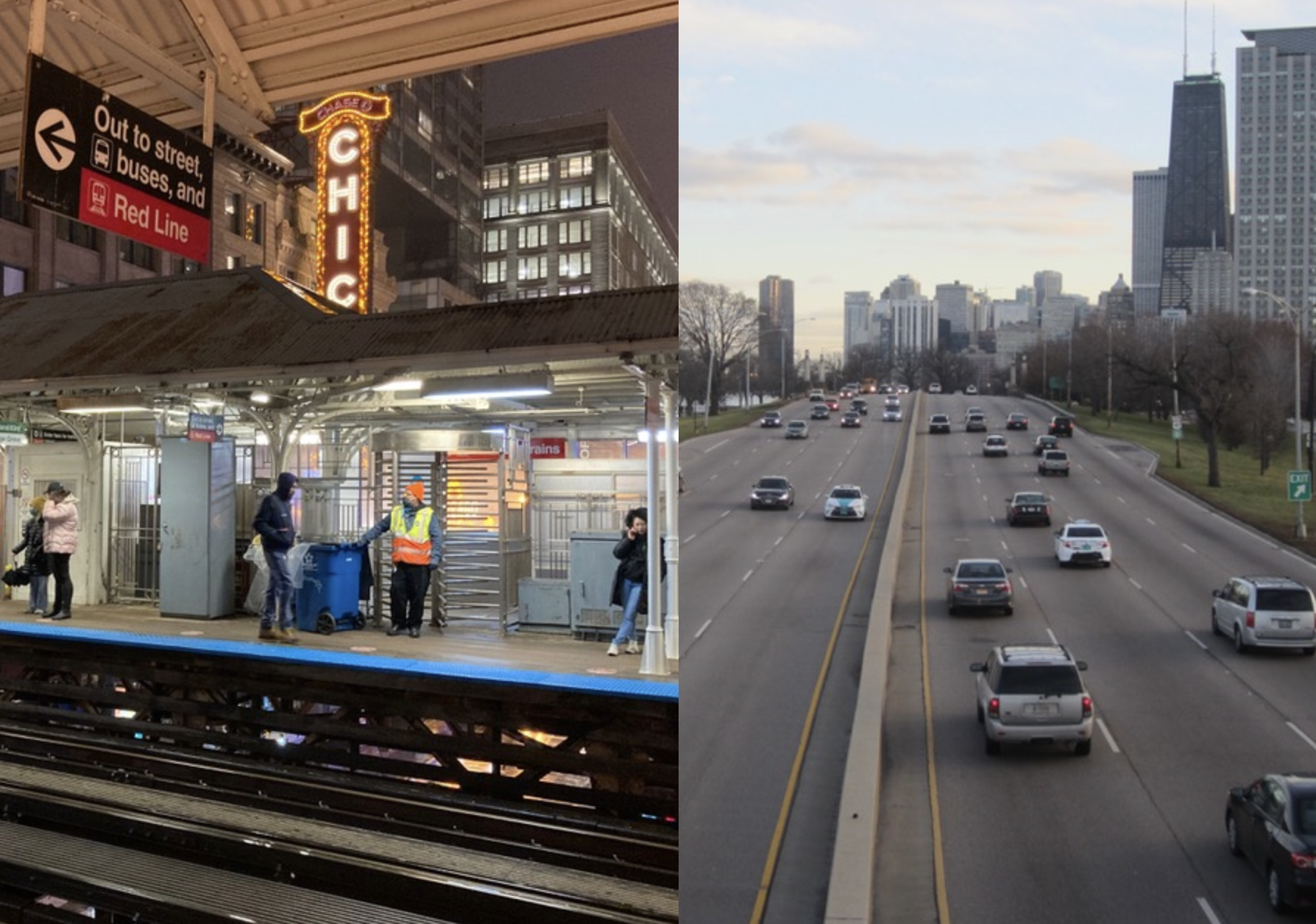Colin Anderson is a Chicago Public Schools teacher.
On Damen just south of Ogden next to Cook County Hospital, a very old Latino man struggled to get on the #50 Damen bus. As he sat down, a sociable Latina woman turned to him and said, “Wow, su reloj está muy bonito” in Spanish ("Wow, your watch is very nice"), likely a friendly attempt to help him forget about the trouble he had getting on the bus. He had trouble hearing her, so she repeated the compliment, and then asked, “¿Cuántos años tiene?” ("How old are you?") in a curious tone. “Noventa y tres años” ("Ninety-three"), he answered. If I am still alive and healthy enough to ride the bus at ninety-three, I will have the bus to thank.
At the next stop, on Damen just north of Taylor, another elderly Latino man in a wheelchair and his daughter got on. A Black woman in her forties immediately stood up and folded up her seat to make room for the man in the wheelchair. A young white woman offered up her seat to the man’s daughter, and the same sociable woman translated the interaction, helping the daughter explain she wanted to stand to better assist with her father’s wheelchair. There was a palpable sense of cooperation and goodwill on the bus, and multiple people had gotten a natural shot of feel-good hormones by helping execute the intricate choreography.
When was the last time you witnessed this kind of prosocial exchange between strangers on the Dan Ryan? How about while someone was parallel parking on Ashland?
A few days later, on the #50 bus going north to Wicker Park, an adorable Black toddler who was almost certainly a Gerber Baby as an infant played peek-a-boo with the white couple behind him as his great aunt rolled her eyes and said, “He knows he’s cute, that’s the problem.” She chatted about the snow, the mayor, and the current ward remap process with two Black women, the ice sufficiently broken by the adorable antics of her grand nephew. Going over the Eisenhower, the same woman helped clear up confusion between the driver and two riders in the back about which stop they wanted.

Again, have you ever witnessed strangers chatting like this on Lake Shore Drive? How about at a traffic signal? The only words I’ve ever heard exchanged between drivers of private cars, whether on the expressway or neighborhood street, were words I cannot repeat here.
During this era of racial tension, fear of the Other, and what can sometimes seem like the end of civility itself, these prosocial interactions between strangers of different races and classes almost seem like a relic of another time. They remind me that social conditions have not always been what they are now, and while the social ills we face have complex histories and manifold causes, how we get from place to place plays no small role. Transportation by private car fails the city socially, while transit’s built-in opportunities for contact and cooperation are tools we desperately need to leverage in order to learn how to live together again.
Jan Gehl, Danish architect and master maker of Cities for People, writes in his eponymous book that, “Passive ‘see and hear’ contacts provide the background and springboard for other forms of contact. Through watching, listening, and experiencing others, we gather information about people and society around us.” The knowledge we gain by experiencing others with our senses in close proximity, unmediated by a windshield, is a quiet understanding that those who differ from us are merely going about their lives just as we are. Furthermore, as Gehl points out, this passive exposure is the prerequisite “stuff” that more involved interaction comes from. What was initially a one-off, brief conversation repeats itself over time and a casual acquaintanceship is born.
These interactions help a culture at its boiling point (re)discover common ground and breathe a collective sigh of relief. The sky is not falling and you can still have a nice conversation on the bus with a stranger, no matter who they are. This public familiarity with one another counteracts suspicion and fear, forces which thrive off of separation and isolation of one group from another. This kind of public trust can only occur through frequent, regular exposure to broad swaths of society, something we experience each time we hop on the bus or train.
The virtues of transit are the deficiencies of private car transportation in mirror-image. Automobiles not only replace contact with isolation, but also replace opportunities for cooperation with competition. Driving pits us against each other to compete for space on the road, and makes every trip a race against the clock and each other. This experience is too much for many of us to handle – all of us can easily recall the last time we honked, cursed, or flipped the bird at another driver, witnessed it, or had it happen to us. Aggression on the road is so intense it often spills over onto the sidewalk or crosswalk, posing a fatal risk to those on foot.

In fact, the number of pedestrians killed by drivers has skyrocketed during the COVID-19 pandemic, even as Americans have been driving less. Although most of us won’t admit to road rage, driving in a large city like ours leaves many of us feeling agitated and stressed. With our brains and bodies overwhelmed, the factor that ultimately catalyzes our bad behavior is the anonymity we assume inside our cars, which causes us to act in ways we never would in plain view. For many of us, it is within this antisocial environment that our most frequent contact with strangers takes place.
This is why transportation by private car fails the city socially. Drivers often come in contact with strangers when one or both parties is in a state of acute stress. I do not mean to imply we’re at our best on the bus ride home from work, just that we do not have the same forces acting upon us as we do behind the wheel. By contrast, on the bus or train, an audience of onlookers who can see us plainly acts as a safeguard against most poor choices. Honking at an older person who crossed the street too slowly for our liking as we speed away results in little or no consequences, while getting into it with someone on the bus is a price few of us would be willing to pay. No wonder it feels like the end of civility, considering that the most common way of getting around makes it easy to be a jerk.

The effects of widespread public contact are powerful. Harvard Graduate School of Design professor Margaret Crawford describes them in the concept of Everyday Urbanism, explaining that the mixing of local populations “create[s] a new condition of social fluidity... as chance encounters multiply and proliferate, activities of everyday space may begin to dissolve some of the predictable boundaries of race and class, revealing previously hidden social possibilities.” For a city as profoundly segregated as ours, previously hidden social possibilities sound like a step in the right direction.
In her book "The Death and Life of Great American Cities," Jane Jacobs argues that informal public interfacing is the necessary “grease” for higher levels of public life. With no “casual public trust,” how can we be expected to collaborate closely with those who are very different from us? If we are out of practice with performing small talk or even simply sharing the same physical space as those not our kith, kin, or color, when friction really comes, we find that things break down with no social grease to smooth things out.
As Nathan Heller reports in his New Yorker article "In a Divided Country, Communal Living Redefines Togetherness," an M.I.T. study of cell phone data showed that in choosing our friends in the modern city, we do not “mix” with our geographical neighbors; we sort according to social strata, regularly interacting only with people who are just like us.
Instead of seriously expanding opportunities for us to mix by taking buses and trains, the elected officials of our city and state continue to over-focus on auto-centric policies and spending. Recently, the Illinois Department of Transportation announced its intentions to widen the Eisenhower expressway in a futile effort to relieve congestion, a move that has Governor JB Pritzker’s full support. Not only is this irresponsible, given the state’s own admission that transportation is the biggest source of greenhouse gases, but it's also counterproductive, since widening urban expressways simply induces more driving, so any congestion reduction is short-lived.

Elected officials fail to consider how the built-in sociality of transit could help treat our present social ills and integrate our segregated city – at least as we go from place to place. But for this to happen, we need to increase Chicago's dismal 28.3 percent transit mode share, something that’s going to require more than the Red-Purple Modernization Program or the Red Line extension to 130th street. We need more frequent and more reliable trains and buses that can compete with the perceived convenience of private cars. We need full-fledged bus rapid transit routes on major arterials so that people can travel between neighborhoods without having to take a detour downtown. In short, we need modern, high-quality transit, not trains from the 1980s that arrive only 70 percent of the time they're scheduled to. Further entrenching ourselves into reliance on cars is not only backwards, but it's also a surefire way to keep Chicagoans from coming into real contact with those who live just a neighborhood away.
In a New York Times op-ed titled "How Americans Can Learn to Live Together Again," Anglican priest Tish Harrison Warren identifies what we need to start rebuilding public trust: “We need cultural habits that allow us to share in our common humanity. We need quiet, daily practices that rebuild social trust. And we need seemingly pointless conversation with those around us.” Those conversations do not happen on a widened Eisenhower expressway. They happen on the bus.





